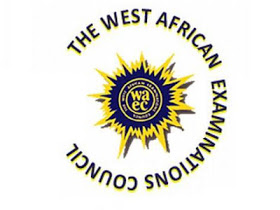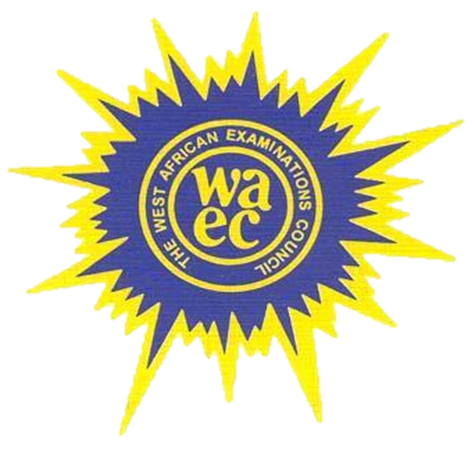NECO 2020 Commerce Obj And Essay Answer/Questions Expo
WELCOME TO AYOSTUFFS BEST EXAM EVER=====================================KEEP REFRESH THIS PAGE IN EVERY 5MIN===================================
*2020 COMMERCE THEORY ANSWERS*
===========================================================
OBJ
01-10: CCAADCBBED
11-20: DBEAACCCDC
21-30: BDDACDEAAD
31-40: ABEDDACBCB
41-50: DAAEBABBBA
51-60: DCCEBBEEEA
==============================≠=======================
THEORY:
1)
(Choose Any Five)
(i)Banker to the government
(ii) Insurance and control of currency
(iii) Lender of last resort
(iv) Foreign exchange transaction
(v) Responsible for monetary policy
(vi) Banker's bank
EXPLANATION:
(i) Banker to the government: Central Bank is an agent and banker to the government. It control public account, receives revenue on behalf of the government and make payment from this account. Central Bank also obtains loan on behalf of the government.
(ii) Insurance and control of currency: The central bank has the right to order the printing of the currency and the issuance of it. It control the circulation of currency, exchange of bad notes for new ones and see to the destruction of the bad notes.
(iii) Lender of last resort: The central bank has a duty to assist the banking system when the banks are in financial difficulties so that they can withstand the strain of excessive demands. In some countries, the banks can borrow directly from the central bank.
(iv) Foreign exchange transaction: The central bank holds the foreign reserve of a country, and this helps in enforcing foreign exchange control regulation. It operates the exchange control which is set up to purchase and sell foreign currencies.
(v) Responsible for monetary policy: The central bank is responsible for the monetary policies of the country. It can use both the expansionist and restrictionist policies to control the quantity and value of money in circulation so as to influence the level of production and distribution of the national income.
(vi) Banker's bank: Th central bank acts as banker to the banks by ensuring that the banks open account with it in order to facilitate clearing of cheques. This helps the commercial banks to have similar facilities to offer to their customers.
===============================================================
2a)
Multilateral trade agreements are commerce treaties among three or more nations. The agreements reduce tariffs and make it easier for businesses to import and export. Since they are among many countries, they are difficult to negotiate.
2b)
(i) Differences in Demand:
advantageous trade can occur between countries if demands or preferences differ between countries. Individuals in different countries may have different preferences or demands for various products. For example, the Chinese are likely to demand more rice than Americans, even if consumers face the same price. Canadians may demand more beer, the Dutch more wooden shoes, and the Japanese more fish than Americans would, even if they all faced the same prices
(ii) Differences in Technology
Advantageous trade can occur between countries if the countries differ in their technological abilities to produce goods and services. Technology refers to the techniques used to turn resources (labor, capital, land) into outputs (goods and services).
(iii) Differences in Resource Endowments
Advantageous trade can occur between countries if the countries differ in their endowments of resources. Resource endowments refer to the skills and abilities of a country’s workforce, the natural resources available within its borders (minerals, farmland, etc.), and the sophistication of its capital stock (machinery, infrastructure, communications systems).
(iv) Existence of Government Policies
Government tax and subsidy programs alter the prices charged for goods and services. These changes can be sufficient to generate advantages in production of certain products. In these circumstances, advantageous trade may arise solely due to differences in government policies across countries.
==================================================================
3a)
An entrepreneur: is an individual who creates a new business, bearing most of the risks and enjoying most of the rewards. ... Entrepreneurs play a key role in any economy, using the skills and initiative necessary to anticipate needs and bring good new ideas to market.
(3b)
Production: is a process of combining various material inputs and immaterial inputs (plans, know-how) in order to make something for consumption (output). It is the act of creating an output, a good or service which has value and contributes to the utility of individuals. ... market production.
(3c)
Fixed capital: is the portion of total capital outlay of a business invested in physical assets such as factories, vehicles, and machinery that stay in the business almost permanently, or, more technically, for more than one accounting period.
(3d)
An exchange: is a marketplace where securities, commodities, derivatives and other financial instruments are traded. The core function of an exchange is to ensure fair and orderly trading and the efficient dissemination of price information for any securities trading on that exchange.
(3e) Specialization is a method of production whereby an entity focuses on the production of a limited scope of goods to gain a greater degree of efficiency. ... This specialization is thus the basis of global trade, as few countries have enough production capacity to be completely self-sustaining
==================================================================
==========================≠=================================
4a) Packaging: is the science, art and technology of enclosing or protecting products for distribution, storage, sale, and use.
4b)
[Tabulate]
SUPERMARKET
(i) Supermarkets are considered to be larger shopping outlets that sell a variety of goods to their customers under one roof
(ii) Supermarkets offer their products at significantly higher prices as compared to the shops and other retail outlets in the surrounding. They tend to charge the executive shopping experience their offer to their customers
(iii) a supermarket are very attractive with distinctive colours and graphics
(iv)Supermarkets are known to stock large numbers of similar products to cover the large number of customers buying the same product
HYPER MARKET
(i) hypermarkets are larger than a typical supermarket. Despite having shelves that contain different varieties of a specific product, hypermarkets have departmental stores that store various products
(ii) Products retail at moderately lower prices in a hypermarket which encourages many people to purchase goods in this stores
(iii) a hypermarket is moderately attractive. They do not have an attractive appearance, and they resemble more of a warehouse rather than a shopping facility
(iv) On the other hand, hypermarkets do not offer a personal touch and the warm services of a supermarket which makes them not to attract a large number of customers
4c)
(i) Improved Customer Experiences.
(ii) Increased Efficiency for Customer Service Departments.
(iii) Self Service Creates Consistency.
(iv) Increased Revenues.
(v) More Insight on What Consumers Want.
(vi) Increased Efficiency Among Agents.
===================================
5a)
A limited liability company: is the US-specific form of a private limited company. It is a business structure that can combine the pass-through taxation of a partnership or sole proprietorship with the limited liability of a corporation.
5b)
(i)SEPARATE ENTITY:
LLC is a separate legal entity in almost many states; meaning thereby that it can own a property, retain attorneys, sell or buy a property, etc on its own.
(ii) LIMITED LIABILITY:
One of the features of LLC is the limited liability of the employees, members, managers, etc. It simply means that the members are not responsible for the misdeeds, legal faults of the other members.
(iii) SIMPLICITY
There is a simplicity in the case of documentation and carrying out operations of the company.
(iv) FLEXIBILITY:
While the corporations continue to operate in case of any death or insolvency or if anybody leaves. But this condition is not compulsory in the case of LLC.
===================================
6a)
(i)The Basis of Co-ordination:
The manager explains to the employees the organizational goals, modes of their achievement and also the interpersonal relationships amongst them.
(ii) Fluent Working:
A manager coordinates the human and physical elements of an organization to run it smoothly and efficiently
(iii) The Basis of Decision Making:
Proper communication provides information to the manager that is useful for decision making.
(iv) Increases Managerial Efficiency:
The manager conveys the targets and issues instructions and allocates jobs to the subordinates.
(v) Increases Cooperation and Organizational Peace:
The two-way communication process promotes co-operation and mutual understanding amongst the workers and also between them and the management
(vi) Boosts Morale of the Employees:
Good communication helps the workers to adjust to the physical and social aspect of work. It also improves good human relations in the industry.
================================
7a)
(i) A catalogue:
is a list of things such as the goods you can buy from a particular company, the objects in a museum, or the books in a library. ... A catalogue of similar things, especially bad things, is a number of them considered or discussed one after another. His story is a catalogue of misfortune.
(ii) Order:
In business or commerce, an order is a stated intention, either spoken or written, to engage in a commercial transaction for specific products or services. ... When the purchase order of the buyer and the sales order of the seller agree, the orders become a contract between the buyer and seller.
(iii) A proforma invoice:
is a preliminary bill of sale sent to buyers in advance of a shipment or delivery of goods. The invoice will typically describe the purchased items and other important information, such as the shipping weight and transport charges.
(iv) Quotation:
a document sent to a potential customer offering to sell goods or services at a certain price, under specified conditions. A quotation is used to let a potential customer know the cost of goods or services before they decide to purchase them. When a seller sends a quotation, it commits them to a certain price.
(v) Receipt:
A receipt is a written acknowledgment that something of value has been transferred from one party to another. In addition to the receipts consumers typically receive from vendors and service providers, receipts are also issued in business-to-business dealings as well as stock market transactions.
========================================
9a)
(i)Physical Resources :
These are considered as tangible assets which the organization uses to create value offering and value proposition to its customers.
(ii) Human resources:
Employees are considered in the most underrated Assets of any organization.
(iii) Intellectual resources :
These are the types of business resources which are nonphysical and intangible in nature like patents of the product, brands of the organization, copyright over important materials and even the partnerships.
9b)
(i) Human rights responsibility
(ii) Philanthropic responsibility.
(iii)Economic responsibility.
(iv) Environmental responsibility
_Good luck_
=========================
Ayostuffs.blogspot.Com send all exam expo answer earlier than
others
============================




Comments
Post a Comment